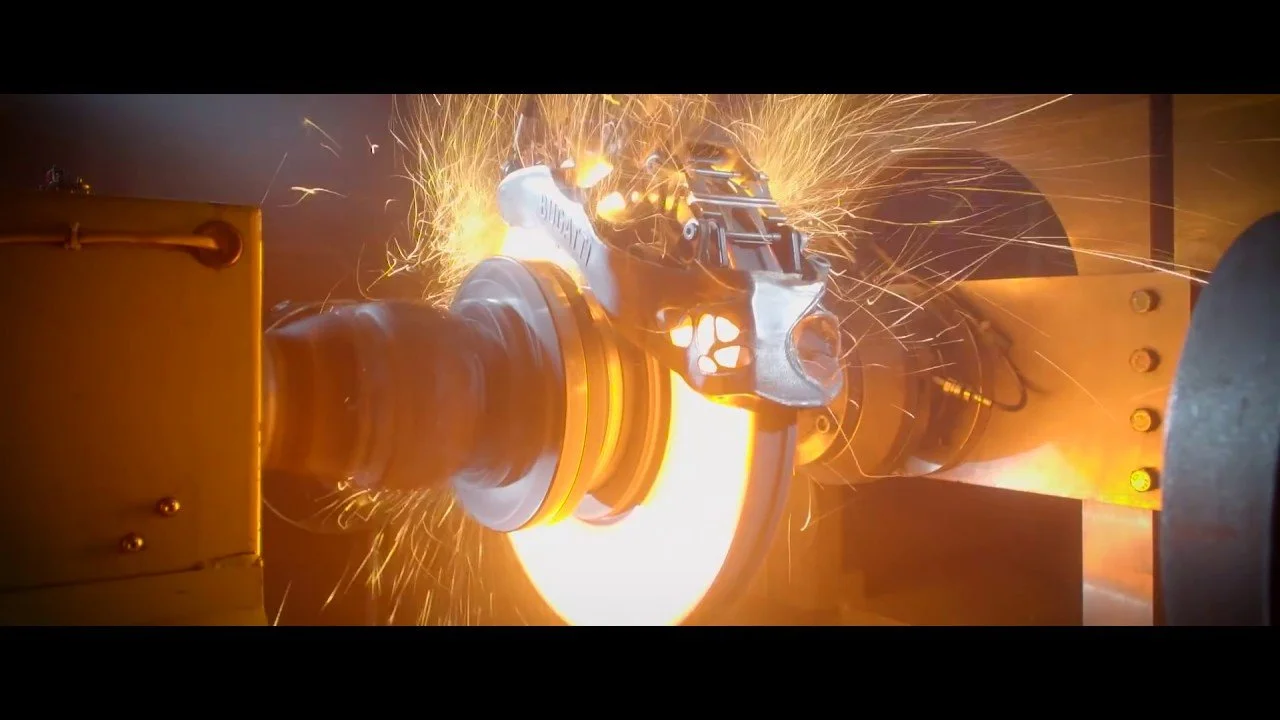Hot topic: Brake Fade
3D Printed Bugatti Brake Testing
You did it, you’ve made it to Your first track day. Excitement Has taken you over, you got life in the tires and the fluids are fresh and full. You've done a couple laps and you’re feeling confident. It’s time, You’re ready to push the car to its limits and live your destiny of being a “Racecar driver” and put all them hours on the sim to the test. You round the corner to the back straight and give it all she’s got. Engines Singing and you’ve got your foot so deep in the pedal you may have added a new depth to the floor pan and now it’s coming. That turn before you get to start that next lap and do it all over again. “How fast was it” “ I bet I killed it” you’ve got so many thoughts and your excitement can’t be contained, and then it happens. You get on the brakes start to slow down and then "Swoop” you feel the brake pedal sag to the floor. You watch and do everything you can to avoid smashing into the barricade and end up off track a little confused, scared and possibly smelly. “what just happened?” You just experienced brake fade.
Brake Fade can be extremely scary and concerning, but why does it happen? What causes it? Can you Prevent it? Thankfully we have answers to all those questions and we are glad to let you know right after you change your pants. First to understand why it happens we need to know what kind of brake fade you experienced. Brake fade occurs in two ways, Pad Fade or Fluid Fade. Fluid fade is a bit easier to understand since it directly involves the fluid. As your probably aware at this point the entire function of your brake system is to convert Kinetic energy into thermal energy. When that thermal energy fails to dissipate fast enough you can reach the boiling point of the fluid. When your brake fluid boils it starts to lose its properties which make it less functional as a hydraulic fluid but you also risk the fluid catching fire as well. This is why it’s important to follow maintenance procedures so that your fluid isn’t expired and has the highest possible boiling point for the required spec. This will help insulate you from Fluid Fade issues but won’t remove the possibility entirely.
Heavily Worn Brake Components - Photo by Eduardo Taulois on Unsplash
Pad Fade on the other is rather complicated, because it’s so material dependent. Pad Fade occurs when the brake materials have reached a high enough temperature that the bonding glue or resin thats used to seat the compressed pad composition actually starts to melt. This can cause other pad failures but when lower temperature metals and other pad materials begin to melt you’ll get increased lining transfer (Pad Materials that adhere to the rotor surface) and Pad Glazing, Now when pad glazing becomes severe enough you’ll actually experience Brake fade, this is because heat soaked materials trapped between the friction surface of the compound (Pads/Shoes) and the braking surface (Rotor/Drum) begin to burn and releases gases. These gases behave more like a liquid coating a surface. This in turn greatly reduces the friction surface and means that braking becomes less effective. Now this can also occur in new brakes as well and is known as green fade. Green fade however is from new brakes that have bedding materials that weren’t properly bedded but it functions in a similar manner.
So you know how and why brake fade can occur but what can you do to prevent it? Thats a great question, the number one thing you can do is make sure your vehicles maintenance is up to date especially if your doing spirited driving or hauling stuff around. Let’s say thats not enough for you though, maybe you’re tracking a vehicle and keep encountering it. Well there’s a few things you can do, Our first recommendation is to change the pad composition that you are using to something that operates in the tempature range you are experiencing. This can be achieved by stepping up into a more aggressive pad. For instance if you're burning through OEM Pads you can switch to something like a Hawk HPS 5.0 or EBC Yellowstuff. Both of these are great options that provide a much larger temperature margin over most OEM Pads. You will likely get more noise and dust but if you need the performance of effective braking this is one of the best moves you can make. You can also upgrade to rotors with better designs for thermal management or go to a Big Brake Kit.
Now we typically think a Pad/Rotor Upgrade is all most people will ever need and if you need help selecting a Pad/Rotor combo for your vehicle than feel free to reach out to us and we can help you understand your vehicles braking needs. Of course big brake kits and other baking components have their place and will be releasing articles discussing how to pick these parts and what makes sense for your application. Whether you are just looking to daily a car, accomplish some spirited driving or really prove yourself on the track well help you chase the goal of perfection one stop at a time.
Work Meister Hiding Brembo Brake Caliper -Photo by Gian Gomez on Unsplash


